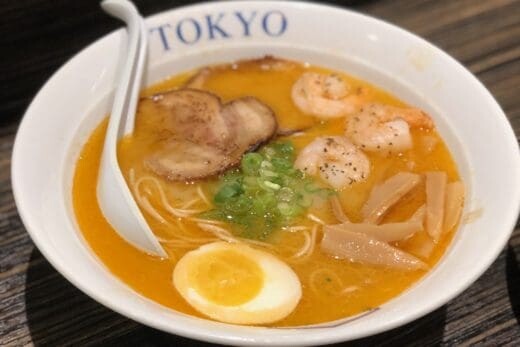Aside from the obvious pile of bean sprouts on top, the following is a good way to distinguish between a Jiro ramen and a traditional bowl of ramen. Jiro-style ramen, also known as “gyoza ramen,” is a type of ramen that originated in Fukuoka, Japan. It is characterized by its thick, creamy, and flavorful tonkotsu (pork bone) broth and is often served with a generous amount of garlic and a large portion of noodles. This style can now be found at Benten Ramen. It’s not listed on the menu anymore, but if you ask them nicely they’ll probably be able to serve it to you.
There are a few key differences between Jiro-style ramen and traditional style ramen:
Broth: The most significant difference between Jiro-style ramen and traditional ramen is the broth. Jiro-style ramen is known for its rich, creamy tonkotsu broth, which is made by simmering pork bones for several hours. In contrast, traditional ramen broth can be made with a variety of ingredients, such as chicken, beef, seafood, or vegetables.
Noodles: Jiro-style ramen is typically served with a large portion of noodles, which are thick and chewy. Traditional ramen noodles can vary in thickness and chewiness depending on the region and style of ramen.
Toppings: Jiro-style ramen is often served with a variety of toppings, such as sliced pork, boiled egg, green onions, and sesame seeds. Traditional ramen can be served with a variety of toppings as well, but the specific toppings used can vary widely depending on the region and style of ramen.
Garlic: Jiro-style ramen is known for its generous use of garlic, which is often added to the broth and served as a topping. Traditional ramen can also include garlic as a topping, but it is not as commonly used as in Jiro-style ramen.


If you are interested in checking out Benten Ramen, you might like the following:

